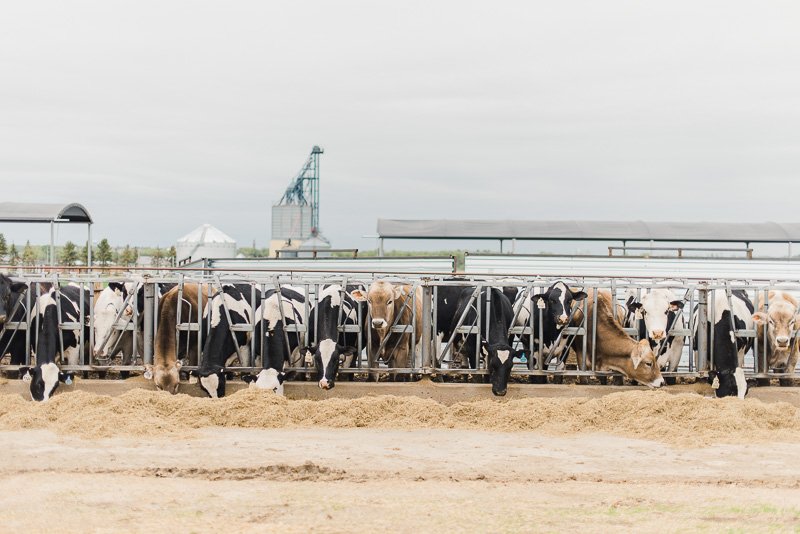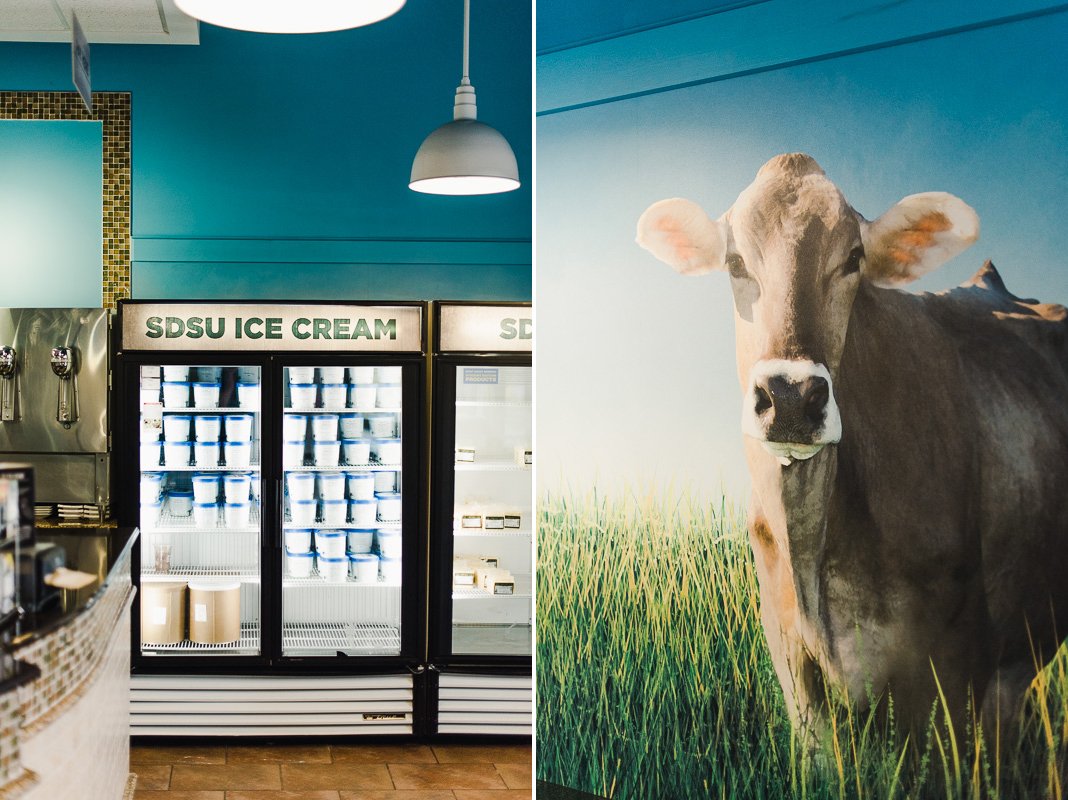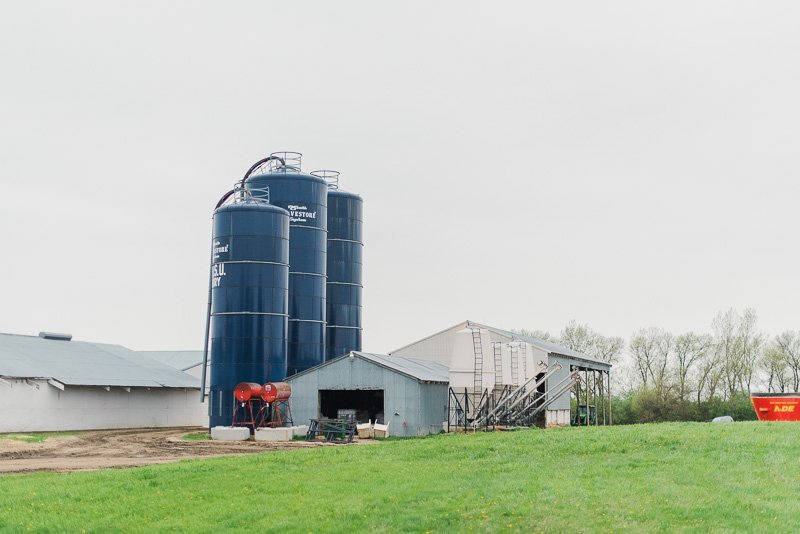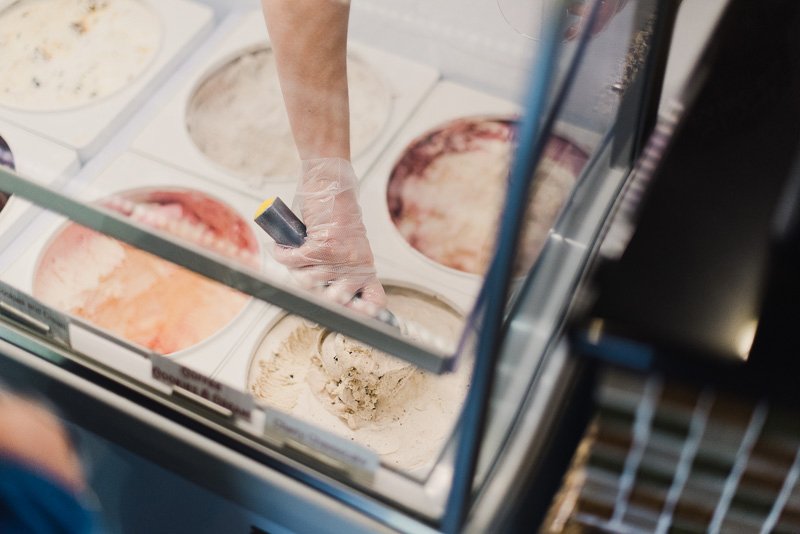SDSU Trains Students From Dairy Farm to Ice Cream Scoop
Whether their future careers consist of caring for cows or developing the next delicious food product, the Dairy and Food Science Department at South Dakota State University is preparing students for success at every stage in the dairy supply chain. Currently, about 115 Jackrabbits are tapping into the university’s expertise as they work toward bachelor’s degrees, while another 30 are taking it a step further in graduate school.
Studying dairy and food science at SDSU is more than just sitting in a classroom, although that’s part of it. Based out of Alfred Dairy Science Hall, students of this program get firsthand experience from farm to table and every step in between.
“SDSU is one of only two universities in the country with a program like ours, which covers dairy from farm to product with a lot of hands-on capabilities.”
It all starts at SDSU’s Dairy Research and Training Facility (DRTF), a fully functioning dairy farm with about 150 mature cows. Students learn every part of managing a dairy farm at the DRTF, from milking to cow health and nutrition. The milk collected at the farm is then sent to the Davis Dairy Plant, a state-of-the-art dairy processing facility. Here, students learn how to operate, maintain and manage a dairy plant while making tasty dairy products, which anyone can purchase and enjoy at SDSU’s Dairy Bar.
The DRTF and Davis Dairy Plant are frequently used by professors to teach hands-on lessons, but students can also work at the facilities to gain more real-world experience and make a little money while they’re at it. In fact, students make up most of the team at both facilities.
“During the school year, we employ about 30 students on a part-time basis. We start freshmen out on the simpler tasks, then identify what they’re good at and what they’re interested in, and eventually move them up to larger responsibilities like feeding and breeding. Any task we do here, students are able to do once they’ve been trained.”
Peter was once a student worker at SDSU’s dairy farm himself. He started as an undergrad in the fall of 1999, continued working there after earning his bachelor’s degree in dairy production and hasn’t left since. Now, as the farm manager, he ensures every cow is well taken care of while helping to coordinate the teaching and research programs.
SDSU’s cows are kept comfortable in well-ventilated barns equipped with sprinkler systems to keep them cool through the summer. Free stalls lined with comfortable bedding provide a soft place for them to rest. They’re also fed high-quality diets tailored to meet their nutritional needs. Many of the feed ingredients, such as soybeans and corn, are grown on SDSU farms. Cow health is monitored using high-tech sensors placed in each animal’s ear to track their movements. This helps the farm crew identify any cow in need of attention.
“Our CowManager sensors are very good heat detection devices so we know exactly when to breed each animal. They’re even better at detecting health problems and can tell us if there’s something off with a cow. It will find virtually every animal that has something wrong with her and then we do an evaluation to figure out what the issue is.”
The health and cleanliness of baby calves and their accommodations are scored daily to ensure the farm’s high standards are met. During research trials, cameras are often used to monitor cow comfort and track how often they’re lying down versus moving around.
When it comes to research, SDSU faculty have long been leaders in dairy cattle nutrition. Today, faculty members are involved in calf and heifer nutrition and nutrigenomics research.
South Dakota’s dairy industry has grown significantly in recent years and processing plants have also expanded throughout the region.
“The products this industry produces are in demand. It’s not just cheese, milk, and ice cream. There are also new-generation products being developed, such as milk protein-based ingredients for food products, to help support the world’s growing protein demands. ”
Plans are underway to build a new state-of-the-art dairy farm at SDSU to support the growing industry. With majors in dairy production, dairy manufacturing and food science, SDSU students will help to continue this growth, while building on the impacts past graduates have already made.
Hungry for Truth is an initiative about food and farming funded by the South Dakota soybean checkoff. The goal is to connect South Dakotans with the farmers who grow and raise their food.





